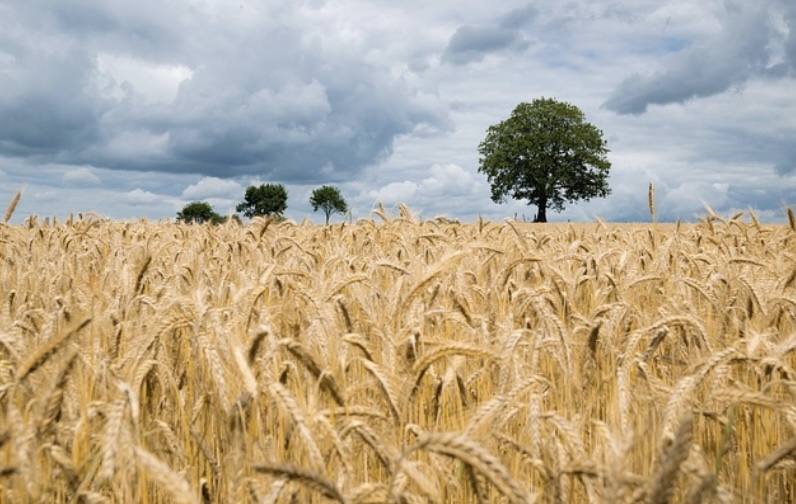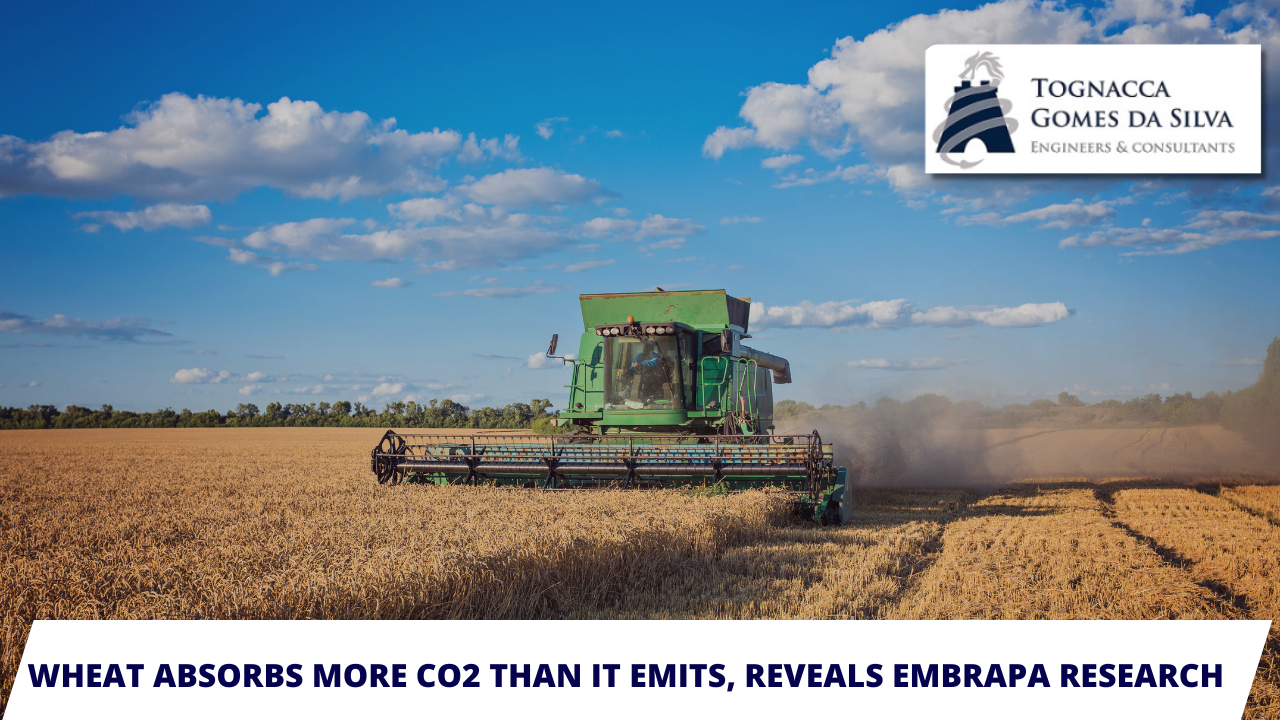Researchers from Embrapa and the Federal University of Santa Maria, in Rio Grande do Sul, discovered that the wheat crop absorbs more carbon than it emits. According to the study, during the production cycle, wheat absorbed a total of 7,540 kg of carbon dioxide (CO2) per hectare from the atmosphere. Thanks to this, it was possible to neutralize emissions during fallow periods, guaranteeing a net supply of 1,850 kg of CO2 per hectare.
The research included the installation of a flow tower, in a grain field, in Carazinho, a municipality in the northern region of Rio Grande do Sul. This equipment has been used by UFSM to evaluate the emission of greenhouse gases (GHG) since the 1990s. The objective was to evaluate the differences between emission and carbon retention (balance) in the wheat-soy production system, quantifying the flows of CO2 in commercial grain farming.
Using the Covariance of Turbulent Flows or Eddy Covariance (EC) method, the flow tower captured information capable of identifying the carbon balance at each stage of the production system throughout the year. The survey involved ten professionals from different segments, such as agronomists, physicists, mathematicians and computer science professionals.
According to Professor Débora Roberti, from the Physics department at UFSM, despite the fact that the equipment has a high acquisition cost (which can reach 180,000 dollars), it allows a quick response to the gas flows in the system, generating a solid base of data in just one year, while other field techniques demand long periods of time for a safe answer in relation to the carbon balance in the environment.
“The method we used helped to establish parameters to guide the more efficient management of agricultural areas in carbon retention in favor of a more sustainable grain production system”, explains the researcher, remembering that the information generated can reach the producer in a way practice, helping in decision-making: “We translate a series of algorithms into a simple language, accessible to the producer and technical assistance, so that the knowledge can be adopted in the field”, he adds.

“Decarbonizing” Wheat
The flow tower was installed in a grain crop, conducted under a no-tillage system, sown with wheat in the winter and soybeans in the summer. The carbon balance was recorded at each stage of the production system, covering wheat cultivation, spring fallow (between wheat harvest and soybean sowing), soybean cultivation and autumn fallow (after the from soybeans to the entry of the winter crop). To assess the CO2 balance, the research considered the retention in the production system and the emission into the atmosphere, discounting the carbon that was exported in the harvested grains.
“In evaluating the results, wheat showed that it is capable of removing more carbon from the atmosphere than it emits, that is, it is a “decarbonizing” crop, which helps to reduce greenhouse gases from the atmosphere such as CO2”, notes Genei Dalmago , also a researcher at Embrapa.
The carbon balance at each stage of grain production, after discounting the amount extracted by the grains at harvest, showed that wheat incorporated 5.31 grams (g) of CO2 per square meter (m²) per day into the system; soy, 0.02 g (ie practically zero); and the two fallow periods emitted 6.29 g.
Wheat had what the researchers call a “negative balance” of carbon, as the crop sequesters more carbon than it emits into the atmosphere. The wheat crop absorbed a total of 7,540 kg per hectare of CO2 from the atmosphere during the cycle, neutralizing emissions from fallow periods and ensuring a net supply of 1,850 kg/ha, proving the possibility of wheat acting as a “decarbonizing” crop in grain production in southern Brazil.
The survey results also point to the negative impacts of fallow on the grain production system in relation to CO2 emissions. In just 30 days, it was able to emit 27% of all the carbon that wheat and soybeans accumulated in 11 months of cultivation. “It is possible to observe that the fallow in the production system emitted CO2, mainly after the wheat harvest, when the heat accelerates the decomposition of the crop residues. In the experiment, there were only 15 days of fallow land in the spring, with the emission of 11.5 grams of CO2 per square meter per day, a very high value that needs to be remedied in the system”, evaluates Dalmago.
According to him, winter cultivation helps to balance the system, since soy absorbs practically the same amount of CO2 it emits, while wheat removes CO2 from the atmosphere. The researcher warns, however, that there are already alternatives to reduce or eliminate fallow between crops in autumn, such as cover crops, plants for grain production or even forage production. “This was an initial study that sought to verify the performance of wheat in fixing CO2 in the grain production system in southern Brazil, but I believe that other autumn and winter crops and even cover crops may present an even greater carbon balance. negative”, says the researcher.
Gouvêa adds, noting that the project is looking for partnerships to expand the evaluation and monitoring infrastructure, especially new measuring towers, which can be installed in different grain production environments in the Southern Region: “Our goal is to expand the study, contemplating different production systems and combining new variables such as carbon fixation in the soil, the influence of rainfall and other meteorological variables, topography, higher levels of lignin in species and its relationship with plant decomposition, among others ”, points out.
(Information from the Embrapa Agency)



